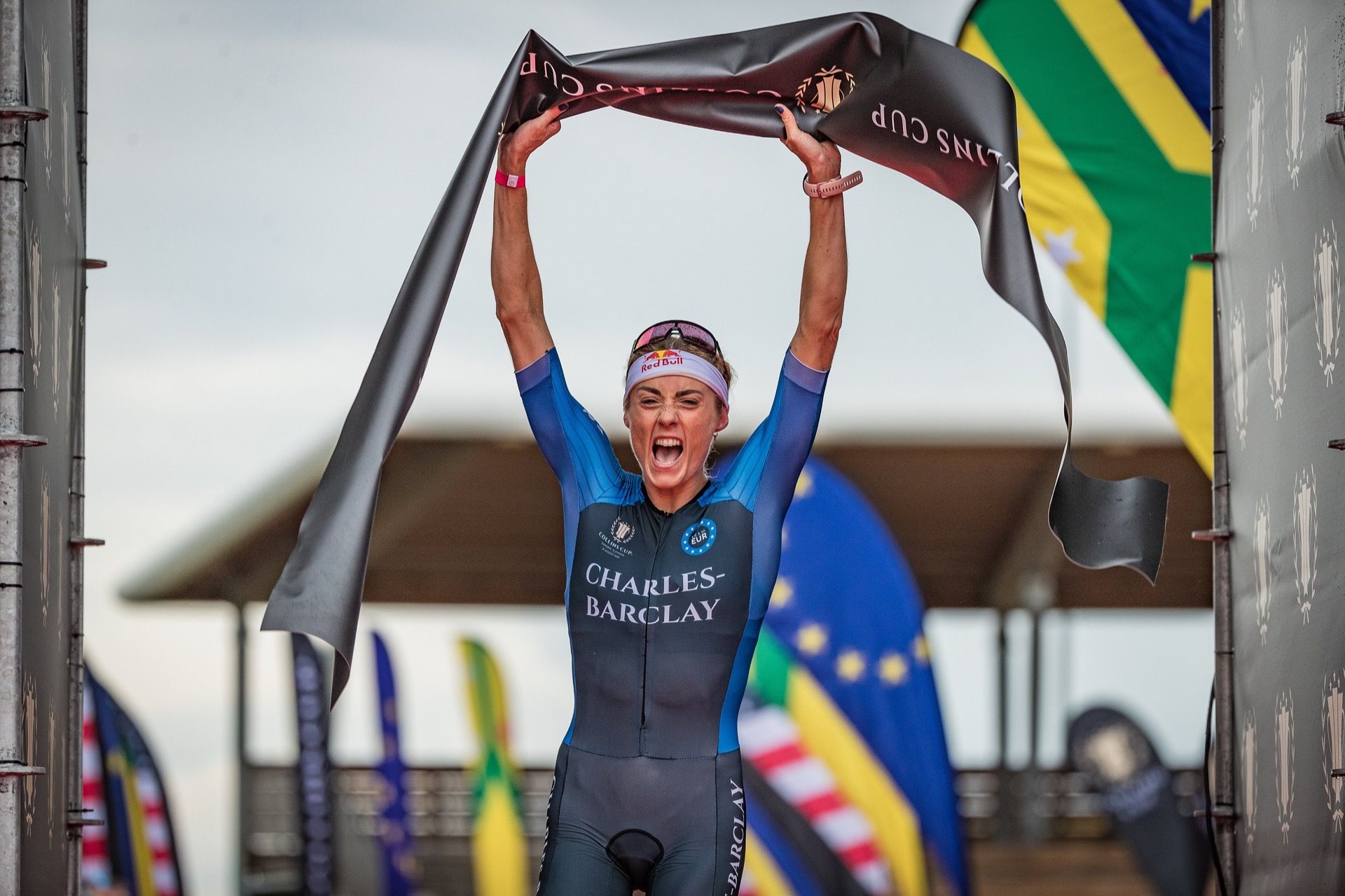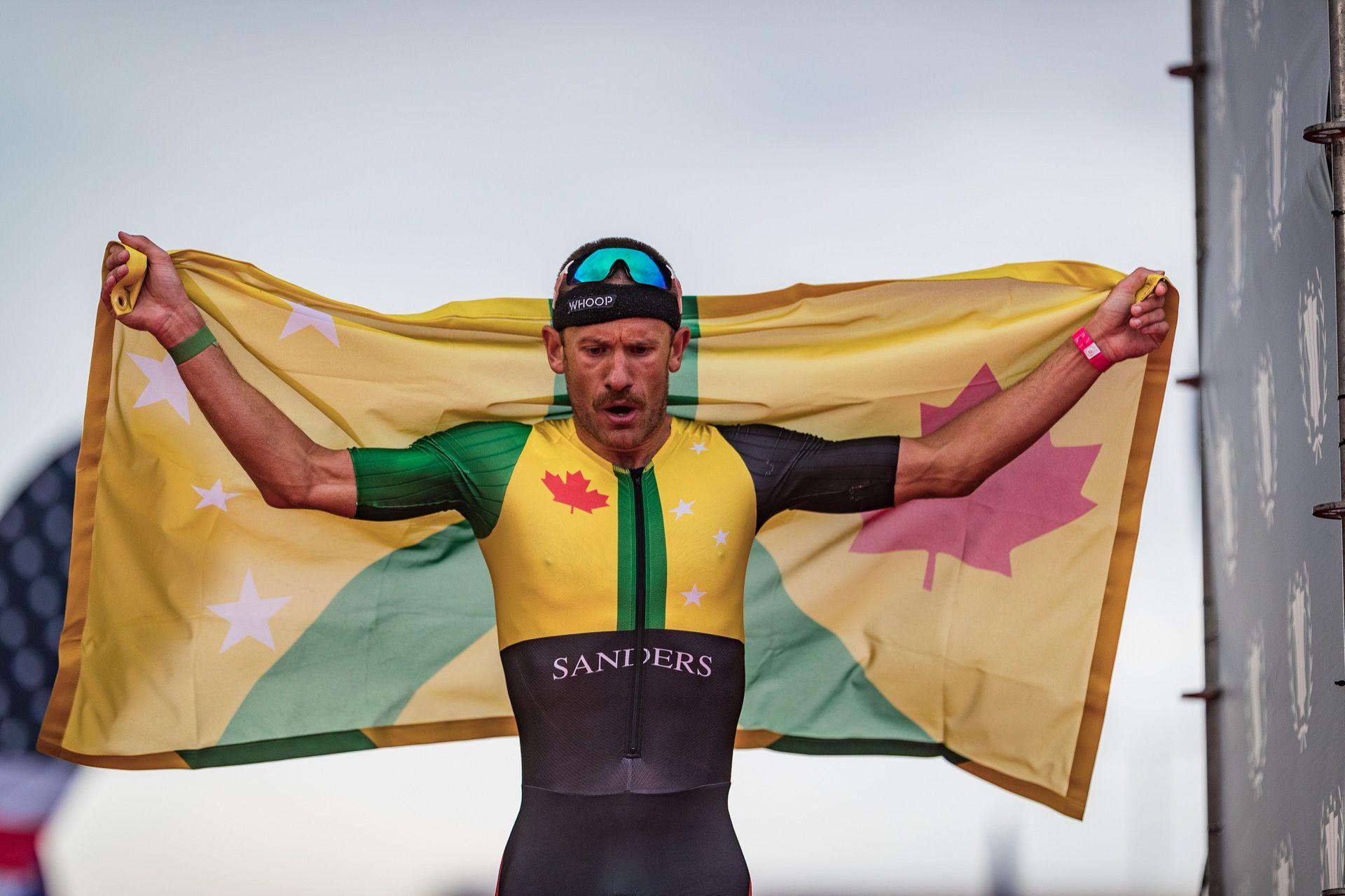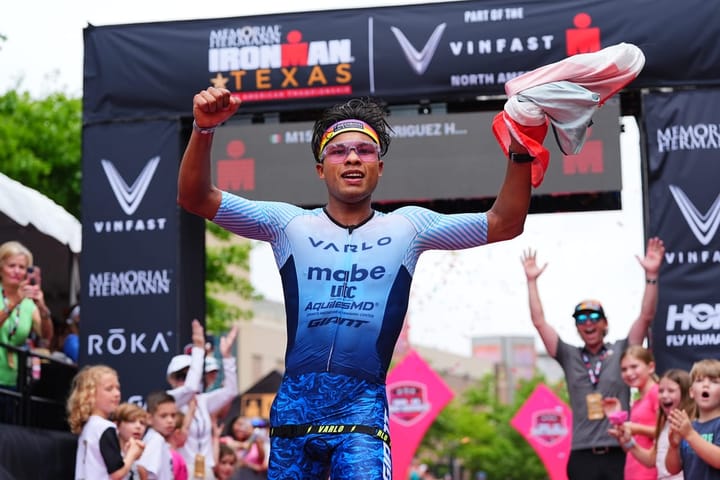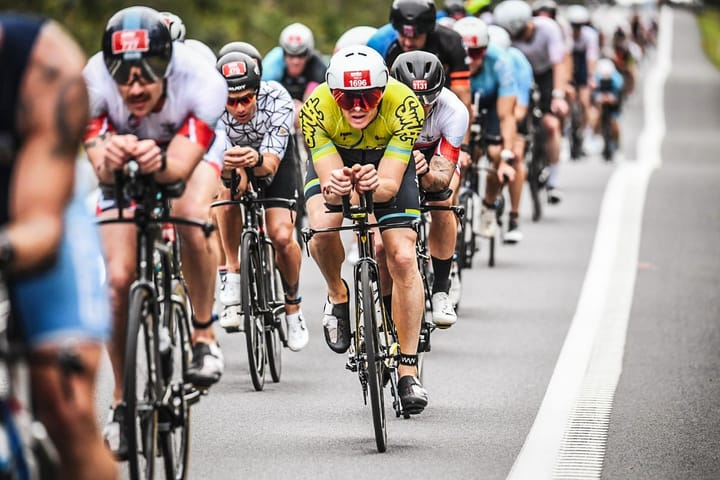Was the Collins Cup a Hole-in-One?
Did you watch the Collins Cup? Was it a hole-in-one for the sport and the did the PTO deliver on their promise of an amazing event. #CollinsCup

For years now we have heard rumblings of this mythical triathlon called The Collins Cup. Named after John and Judy Collins who are responsible for triathlon as we know it today, this event had almost become the stuff of triathlon legend before it was ever run. Some said it would be possible, while others opined it would never even happen.
Based on golf’s Ryder Cup, it was promoted as the event that will bring long-course triathlon to the masses. In teams from USA, Europe and everywhere else, the biggest names in triathlon would face off in a format we had never seen before.
If you have been even mildly interested in triathlon for the last five years, this is an idea that has popped up more and more often. First it was Super League Triathlon, then it was Challenge Daytona or the PTO Championship, and this year we even saw World Triathlon add in the eliminator format into their World Championship series and the mixed-team relay at the Olympics. A number of different organisations have tried to take a swim, bike and run race and do it differently.
The PTO who are responsible for the Collins Cup promised us the most groundbreaking, state-of-the-art broadcast that would make even those people who have never heard of triathlon tune in to follow the action.
Did they succeed? Was the Collins Cup a Ryder Cup-level hole-in-one? Did we see the dawn of a new age for long-distance triathlon?
What did I like?
The Format
There are so many positives for this event but the obvious one to me is the format itself. I love the idea of head-to-head matches with points for your team and bonuses on the line. Seeing how many athletes were pushed all the way to the finish line to pick up maximum points was a sight to behold. The look of suffering on Jan Frodeno’s face isn’t something I have really seen since he was getting whooped by Alistair Brownlee at short distance (trust me, it’s a thing).
We got to see some real face offs too. Holly Lawrence vs. Ellie Salthouse in the swim was probably the only time I have seen a swim be actually exciting. Katie Zaferes sticking on the feet of Lucy Charles-Barclay would have shocked more than a few casual fans of the sport. Even the gutsy way that Lionel Sanders delivered one of the best performances of the day despite his insanely fast performance at an Ironman event 6 days before, probably due in part to his desire to do his bit for the team.
What we got were 12 individual races that were each in their own right an outstanding race that I personally would love to watch all of (yes I am a massive tri geek). I think the format also shows that triathlon is more than just the mass start, first to the line. It can be done in a variety of ways and still be both exciting and a triathlon.
The ‘Trimmings’
As much as this was all about the actual race, I feel that this event was much more. Consider the hype leading into the race — the way the races were drawn and the dynamic around those events. The press conference was probably the best triathlon press conference I have ever seen. I have spoken about this before but there exist so many great rivalries in our sport and often I feel like there is a missed opportunity for these to be highlighted. 2019 Kona, Frodo v Lange the rematch. Alistair Brownlee making his debut. Two Olympic Champions facing off… but the only person doing any sort of press about any of this was Bob Babbitt. This time Bob was able to do what Bob does best, but he had sooooo much more to talk about because of the banter we had seen at the press conference.

Add in the Fantasy League sub-site, the pre-race documentaries and just the general hype that the PTO put into this event, it was hard not to get excited in the lead up to it. I was shocked by how much my excitement levels continued to rise after the match-ups, then the press conference. And I, hand on my heart, spent a three-hour trainer ride watching Breakfast with Bob interviews. Not to mention the amount of effort I put into my fantasy league picks. Those extra things around the race itself were unlike anything I have ever really experienced before as a fan of triathlon.
The Quality
Whatever you want to say about this race, one thing I think most of us could agree on is that it looked expensive. By that I mean you could see how much money they sank into the coverage. Lots of cameras, the fancy slow-mo one that tracked them through transition and even the infrastructure on their website to display statistics like HR, watts etc. This wasn’t the usual ‘one camera following the leaders’ kind of broadcast. There was a substantial investment in capturing the race and if you isolate how it was captured I think it was done well. The angles were good. The action was easy to see, when it was on screen.
You could see the PTO stood by their word of investing heavily into the broadcast. Personally, I would love to see what the coverage of each individual race would look like — if there wasn’t the need to switch between 12 different events, but simply show the 3 athletes in the single event. I think that the quality would really shine in a situation like that and personally I hope they release those 12-race packages to get me through many many trainer sessions (I warned you I am a geek).
There was lots to really like about The Collins Cup, especially when you frame it as their first attempt at a new format of racing in the middle of a global pandemic.
But like any good review I think it is important to point out where I think there is room for improvement too.
What do I think could be improved?
The Broadcast
I think this is the natural place to start. Was the broadcast bad? Definitely not. But was it the groundbreaking experience that would make non-fans of the sport flock to long-course triathlon? Also a no from me.
The biggest issue of the broadcast was working out what to show and when. Too many times there were things happening at other parts of the race that we just didn’t get to see. I know how close the Sam Appleton and Sam Long race ended up being, but I never actually saw it. I know that Kyle Smith had a crash that put him out of his race but again, I never saw it. I saw all of the winners cross the line, but rarely the athletes in second or third.
As I said, this was the first time an event like this has been run, which means there is no rule book. I cannot imagine how hard it would have been to direct all of those races happening at the same time. There were however a few little things that immediately come to mind.
Commentary: The commentators must have been outside, because for so much of the race I could hear the background noise of music and on-site announcers. I found this extremely hard to ignore and it really started to grate on me. At one point it started raining and I could literally hear the rain pounding down on the roof of where they were positioned.
The length: It got very long. I started watching at 8:30pm and went to bed at 3:30am. I wonder if starting the men first and then having the races go every 10 minutes would have sped the whole thing up? I haven’t really analysed the finish times enough to work that out but the big hour long gap in the middle wouldn’t have been there.
Racing action: Split screens, audio-only interviews and less panning shots of the location would have allowed more attention on the action as it unfolded. Instead, I saw countless panning shots of the facility and that giant silver horse. I saw replays of athletes crossing the finish line over and over. I watched all the winners be interviewed all while racing was still happening. I don’t think I am saying anything wild here and I am sure that the second running will probably change a lot of this.
The Statistics/Timing
Again, I know this is low-hanging fruit. I heard Barrie Shepley say they clearly took some big swings in terms of the technology they used for this event ,and it didn’t seem to pay off. I know they will be all over this and I am sure they are aware of what went wrong. But it got to the point for me where the splits/results were so all over the place that when Taylor Knibb destroyed the field on the bike I just assumed it was an issue with the technology.
I think the main take away from this is that at least they took the swing. I would rather see the PTO take some big risks and try to deliver something we haven’t seen before and fall short, rather than just continue to play it safe like we have seen for so long.

I also think that it is worth noting that choosing to focus on points rather than the splits is not something I think needs to be improved. I might be reading into this but I believe that this was a choice to try and make it easier for non-triathletes to follow. For me, a nerd, it was just not what I am used to. Different doesn’t mean bad and objectively I think it was a good approach to take.
I also really wanted to hear the mic’d up athletes discussing tactics with their captains. This was one of the things I was most excited about. Next time I am sure it will be better.
The Racing
Now this is a weird one and it is something I seem to bring up in nearly every one of these reviews that I do. But for long-course racing to be exciting and good viewing there needs to be a way to get the athletes closer together. Is it draft-legal bike riding? (I know how many ‘fans’ this will piss off.) Is it finding a more statistics-based way to work out the teams and match-ups? Or is it the design of the course to make the action feel closer rather than seeing Jan Frodeno off the front (again) running solo?
I do not have an answer to this. I know there were things like Daniela Ryf being a bit sick and a number of crashes that changed some race dynamics, but there were also some athletes who were just never ever featured.
The only sort of thing I can think of off the top of my head to help with this would be to maybe add in a race inside the race. What if the races went from lowest- to highest-ranked athletes still with the time gaps but suddenly there was an elimination element. If an athlete catches an athlete from the race ahead of them they ‘steal’ their points and that athlete is eliminated. Suddenly it is not only about your three-way race; it is also about the races ahead and behind you. If an athlete has created a gap to secure the full 6 points and is then caught by an athlete behind them, that athlete gets all 6 points plus the points they have probably secured by making up all that time. Maybe some other little ‘gimmicks’ could help to change the dynamics and tactics.
Final Thoughts
The Collins Cup is based on the Ryder Cup in golf, and I think in a lot of ways that works quite well. The PTO have come out and very publicly laid out their intentions to make a triathlon broadcast package that will break through into the mainstream.
I do not think that the inaugural Collins Cup was that package. But I am also not so critical as to not also accept this was only their first-ever attempt. Framing it in that light I think that this event was a huge success and an incredible leap forward for our sport. From all reports, the athletes loved it. Everyone I know who was at the race cannot stop raving about the event. The promise alone of this event has forced other triathlon brands to attempt to lift their game (not naming names) which has made even more races easy to watch.
Was it a hole-in-one? No.
Was it a failure? No.
Was it the foundation of something with real potential? I think so. So to keep up with the golf analogy, the PTO hit a birdie.
I cannot wait to see what comes next for the PTO and The Collins Cup. Much like athletes who talk a big game in the lead up to their first Kona race, you don’t really expect them to get it right on their first attempt… but there is always some small part of me that really hopes that they do. It is the same with The Collins Cup. I don’t think I ever expected them to get it perfect right away. I expect them to take away lots of learnings from this first attempt and continue to evolve this into something that is even better than what they originally promised us.





Comments ()